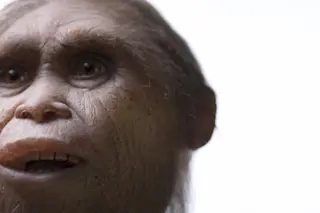First found in 2003 — a likely second site was just announced — Indonesian hominin Homo floresiensis stood a mere meter tall. Reconstruction by Atelier Elisabeth Daynes. (Credit: Kinez Riza) A partial jaw, a bit of skull and half a dozen teeth: this handful of fossil finds from Indonesia might not seem like much, but at 700,000 years old they have delivered a definitive smackdown to Hobbit haters (and I'm not talking about Gollum). The small assemblage of fossils, belonging to at least three individuals, proves once and for all that Homo floresiensis, popularly known as "the Hobbit," was a distinct species. What's more, these fossils, described today in Nature, refine the evolutionary timeline of H. floresiensis and shed some light on the pint-sized hominins most likely ancestors. You may recall that a dozen years ago, researchers announced the discovery of a diminutive hominin that lived on the Indonesian island ...
Return to Flores: "Hobbit" Hominin Ancestor Discovered
Discover the latest Homo floresiensis fossils and how they reshape our understanding of this unique Hobbit hominin species.
More on Discover
Stay Curious
SubscribeTo The Magazine
Save up to 40% off the cover price when you subscribe to Discover magazine.
Subscribe













